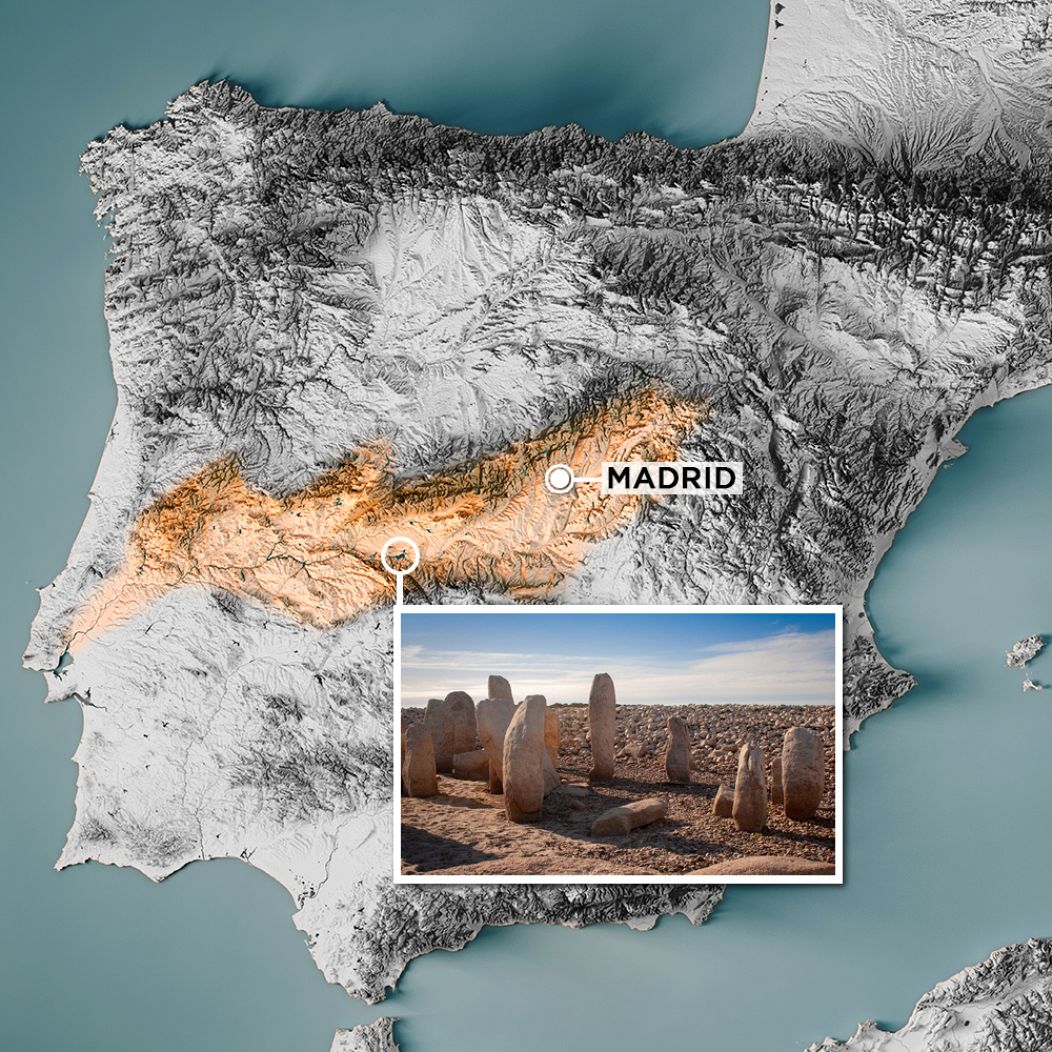An extraordinary drought has rescued from oblivion the Dolmen de Guadalperal — one of the major megalithic monuments of the Iberian Peninsula, which has been submerged in a swamp for nearly six decades.
An extraordinary drought has rescued from oblivion the Dolmen de Guadalperal — one of the major megalithic monuments of the Iberian Peninsula, which has been submerged in a swamp for nearly six decades.
The monument disappeared in 1963 under the water of the Valdecañas reservoir — a hydraulic structure in western Spain built under Franco’s regime.
Consisting of 93 menhirs, some call the monument the “Spanish Stonehenge” although prehistory professor Primitiva Bueno Ramírez told Euronews that it’s a different construction to the iconic English monument.
Dolmen de Guadalperal is a cemetery that dates from between 4000 to 2500 BC, while the English Stonehenge is a dolmen built between 3100 and 2000 BC and wasn’t only used as a cemetery.
Bueno explained that what is remembered from these megalithic structures are its ruins. But to really understand what the Dolmen de Guadalperal was back in its day, one has to imagine it covered by a burial mound with a hole accessing the chamber, there one finds a series of engravings, which the historian studied in the 1990s.
“They are usually oriented to where the sunlight passes, with a funerary purpose,” she said.
A milestone in European cartography or just a snake with a triangular head?
Sculpted on one of the menhirs is a winding line that Ángel Castaño, president of the cultural association Raíces de Paralêda located in the province of Caceres in western Spain, believes could be a milestone in European cartography.
He said the curves could correspond to the meanders of the Tagus River, which passes through the area.
“It could come in handy to navigate the river,” he told Euronews.
The Tagus is one of the natural borders dividing the north of the Iberian Peninsula and is difficult to pass through, particularly in the western region of Extremadura. There were only some parts that were crossable and according to Castaño, the Dolmen de Guadalperal was one of them.
However, for Bueno, this theory is false because for her the lines represent a snake with a triangular head — a recurrent element in the European megalithic art of that era.
The cultural association Raíces de Paralêda has started an online petition to take the monument out of the swamp before the water covers it up again. "The stones are granite, they're very porous and they're getting cracks," said Castaño.
“To erect a monument and move it, it requires a well-documented archaeological report to make sure none of the pieces will be broken,” said Bueno, adding there needs to be 3D documentation before making the transfer.
More sunken megalithic heritage
For the expert, the recent resurgence of the monument is an opportunity to talk about the megalithic heritage of Spain.
“All of Spain’s southwestern area is rich in data on the first farmers and metallurgists, but ten years ago nobody talked about it,” said Bueno.
In fact, it is not the only monument from this era underneath the waters of a Franquista swamp.
"We know dolmens submerged in reservoirs in other points of the Tagus, such as Guadancil a few kilometres downstream from Guadalperal," Enrique Cerrillo Cuenca, a researcher from the Spanish National Research Council told Euronews.
“From the project developed a few years ago there, we know that the presence of a dolmen is a kind of 'tip of the iceberg' and that around the big monuments there could be smaller or less important monuments clustered."
Cerrillo said very little is known about the Neolithic communities that inhabited this area of the Tagus, but that they all inhabited the same locations "along riverbanks and areas with the biggest volume of water".
"The investigation around the area of Guadalperal could serve to know the context of a collective burial site that formed part of the landscape that the prehistoric communities perceived from 6000 to 4000 years before the present."












